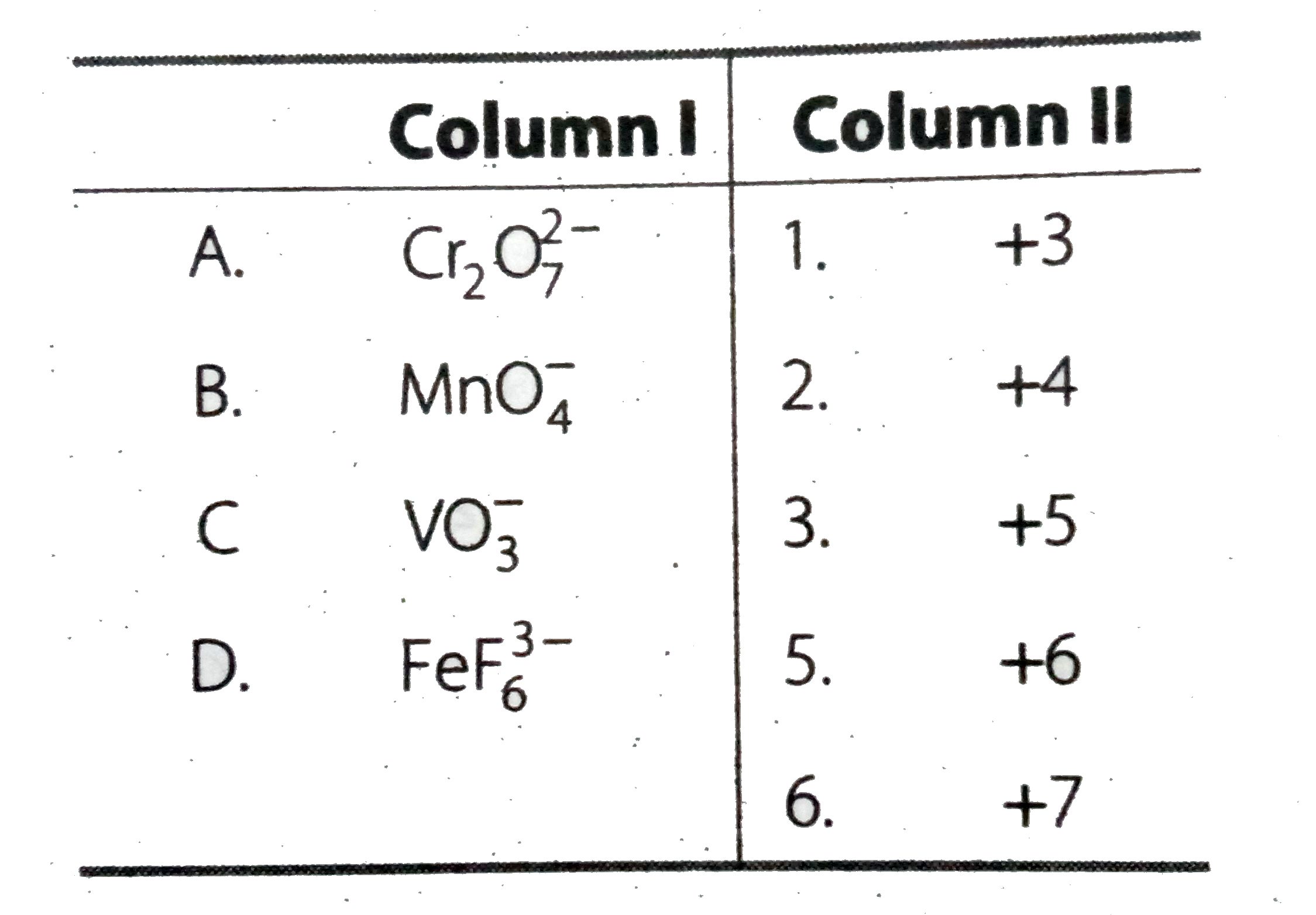For the complex ion [Fe(CN)6]3−, state :
(i) the type of hybridisation.
(ii) the magnetic behaviour.
(iii) the oxidation number of the central metal atom.
Video Solution
Text Solution
For the complex [Fe(CN)6]3−
(i) The hybridisation is d2sp3.
Electronic configuration of d2sp3 hybridised orbitals (as CN− is a strong ligand) of Fe3+, with six pairs of clectrons from six CN− groups in [Fe(CN)6]3−

(ii) As there are 5 unpaired electrons, the [Fe(CN)6]3− compound is paramagnetic.
(iii) Oxidation state of iron is + 3 (Fe+3).
|
Updated on:21/07/2023
Topper's Solved these Questions
- BOOK - ICSECHAPTER - CHEMISTRY-2018EXERCISE - Question (Answer the following question)5videos
CHEMISTRY-2018
- BOOK - ICSECHAPTER - CHEMISTRY-2017EXERCISE - Question (Answer the following)4videos
CHEMISTRY-2017
- BOOK - ICSECHAPTER - CHEMISTRY-2019EXERCISE - Question (Answer the following questions)5videos
CHEMISTRY-2019
Similar Questions
The complex ion [Fe(CN)6]4− contains:
View SolutionFor the complex ion [Fe(CN)6]3− state The geometry of the ion.
View SolutionThe name of complex ion, [Fe(CN6)]3− is
View SolutionFor the complex ion of [Fe(CN)6]3− :
State its magnetic property.View SolutionFor the complex ion of [Fe(CN)6]3− :
Show the hybridization diagrammatically.View SolutionFind the oxidation number of Fe in K4[Fe(CN)6]
View SolutionThe complex K3[Fe(CN)6] furnishes
View SolutionMatch column I and column II for the oxidation states of the central atoms.
 View Solution
View SolutionWith reference to the coordination complex ion [Fe(H2O)6]2+ answer the following: (at. no. of Fe=26)
What is the oxidation number of the central metal atom?View SolutionFor the complex ion of [Fe(CN)6]3− :
Is it an inner orbital complex or an outerorbital complex ?View Solution
